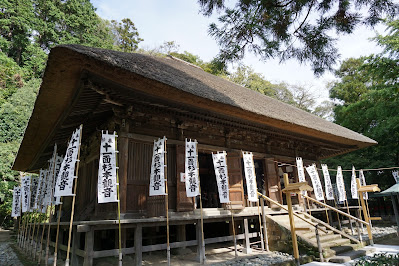Kamakura is a popular daytrip destination for both locals and tourists. It is just a little over an hour train ride from Tokyo, yet it presents a completely different scenery.
Surrounded by mountains and facing the ocean, Kamakura was chosen as the the seat of the samurai government at the end of the 12th century and so remained for 140 years. Later it was developed as a sophisticated resort and residential town and has been loved by intellectuals.
Kamakura has too many sites to cover, so let's mention just a few photogenic spots.
1. Hokoku-ji Temple
The zen temple was established in 1334 and is known for its beautiful bamboo forest which has 2,000 Moso bamboos. You can walk through the garden, and have matcha green tea at the tea shop facing the forest. A tranquil, relaxing moment. The bamboos remain green all through the year.
2. Sugimoto-dera Temple
Built in 734, Kamakura's oldest temple has subdued colors but but presents magnificent atmosphere.
The Nioh statues are said to be the works of Unkei.
The iconic moss stairs leading to the main building are not in use anymore (because it is obviously slippery!) You can take stairs that run parallel to them.
The thatched main building is awesome.
3. Sasuke Inari Shrine
The shrine sits quietly in a residential area. The tunnel of red torii gates leads up to the main shrine.
The precinct is filled with numerous figurines of white fox, which are believed to be the God's messengers.
It is said that the Gods of the shrine bring mercy to people who pray for career success, good matchmaking, and their pets' happiness. Wide-ranged benefits.
Kamakura is especially popular in the seasons of cherry blossoms (spring) and autumn colors, but it has beauty in every season. If you have a free day in Tokyo, a short excursion is worthwhile.








.JPG)

.JPG)
.JPG)


.jpg)
.JPG)
.JPG)
.JPG)
.JPG)
.JPG)



.JPG)
















